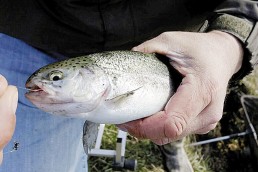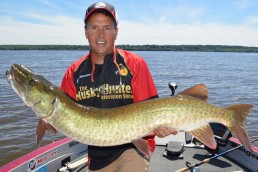Set the Hook!
SHARE THIS POST
Most all of us have been asked by beginners, “When do I set the hook?” Then we tell the person to, “Set the hook”, and they miss the fish, followed by them saying, “Well, I did what you told me.”
The biggest problem with telling a person to set the hook is that you didn’t have the actual “touch”; by the time you said to set it, and they actually did, there was just enough lapse of time to miss the fish. True, there are times when it works, but that is normally when a fish has the bait in its mouth long enough that it probably set itself; or it was a “bait” situation using a circle or Tru-Turn hook where the fish pretty much set the hook itself.
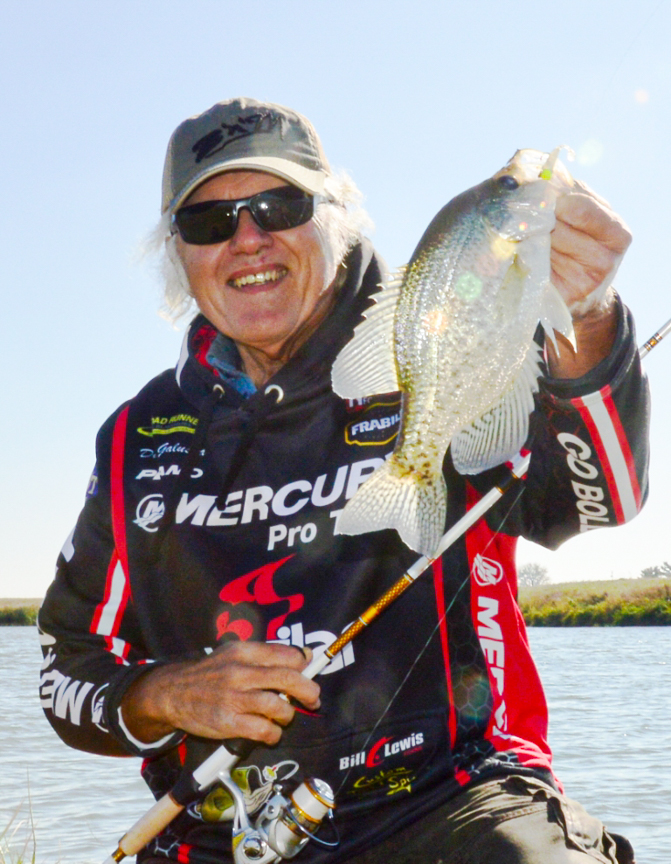
So, let’s try relaying when and how to have positive hook sets in float and lure fishing.
Let’s start with some sort of bait fishing with a float. A float can be used with live bait or a jig tipped with something like a waxworm, minnow or Crappie Nibble. It also helps to add something like a Kick’n Bass attractant to help the length of the fish’s hold time.
There are three basic float movements, sometimes coming in a combination: side movement, lift, and fast pull downward. A bobbing float only indicates the bite—not a time to set the hook. However, if the float is moving fairly quickly to the side, and not going under; the float goes under and keeps going without popping back up; and the float raises upward, and perhaps lays on its side, these are all times to set the hook.
Fishing on the bottom with bait can sometimes be the easiest situation to know when to set the hook. This is normally done for catching catfish, carp and drum, but can be for other species as well. If the right hook is used, such as a Daiichi Circle Wide, Boss Kat, or Tru Turn with a cam action, it can make the process much easier.
Normally, if the rod bends way over, the fish has it, and you’d better set the hook before the fish takes the whole setup into the water. If the line goes totally slack and it still coming towards you, it is time to wind up the line quickly, and set as soon as it becomes taut. A tight line with some sideways movement is another sign of a fish on, but if the rod is bobbing only slightly, then the fish is nibbling. If the bobbing becomes more aggressive, then it may be time to set.
Now, let’s turn our attention to using different types of lures. There are so many that we’ve selected a few with inherently more difficultly in learning proper hook setting. These include bottom fishing soft plastics, jerk worm/shads, topwaters, jig combinations, swimming jig and body combinations, and faster-moving baits like spinnerbaits and crankbaits.
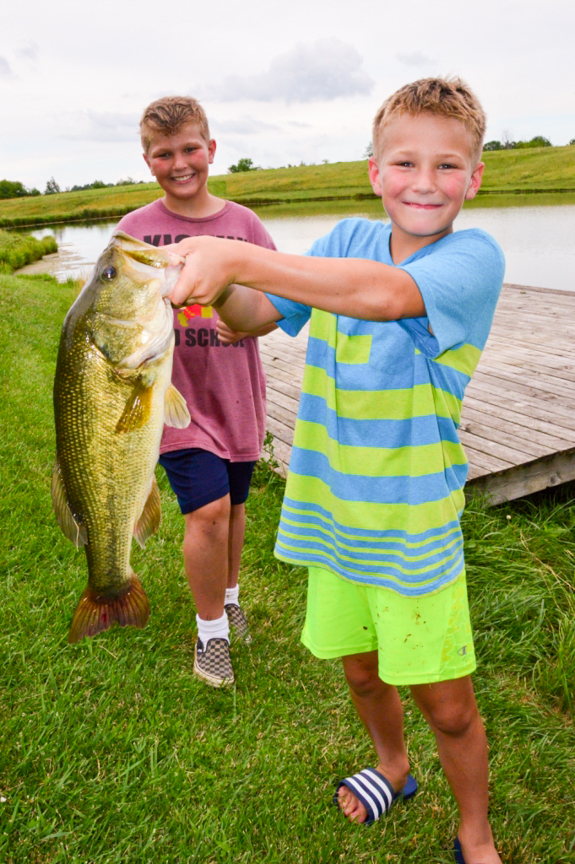
Two that are similar, but with a slight difference, are fishing a plastic worm/tube on the bottom, and a jig combination. With both, there can be what I call a “soft, heavy weight feeling,” especially with a jig. The best way to get a feel for this is to place your rod tip under a flexible tree limb and slowly lift upward. This is the sort of pressure you’ll feel when the fish has the lure. It isn’t a solid weight like a rock, but a soft, “giving” weight feeling. If you feel this, then set the hook.
Are you enjoying this post?
You can be among the first to get the latest info on where to go, what to use and how to use it!
With a worm, it is possible to drop the rod tip slightly before setting, but not with a jig. Keep a tight line when setting the hook on a jig, or the jig head will swing downward, hitting the fish’s mouth and making it let go. If a slight “tic” is felt, followed by line movement and the weight feeling, then set it. This is when a sensitive rod comes into play.
Using a jerk worm/shad is similar to fishing plastics on the bottom. This is one of the most difficult, along with topwater, to teach a person when to “pull the trigger.” While fish will occasionally hit it hard like a crankbait, they normally have a tap-n-carry type of strike. When this occurs, watch the distance of the carry. Don’t let them go too far, but don’t set the hook at the instant of the tap as they start carrying. I’ve normally used the rule of 1 to 2 feet of a sideways carry being a long enough time. If it is one of the rare straight-out or straight-in carries, then either set it going out, or reel up the slack during an “in” carry and set.
Since we mentioned topwaters, and the sets are similar, let’s spend some time on that style of lure. The most common mistake, especially if there is a long period of time between strikes, is to set the hook on a “blow up.” This occurs when a fish comes up and hits the lure, making an explosion on the surface, but not really having hold of the lure. Keith Lundahl, former owner of Lundahl Lures, maker of the famous Pop’s Topwater Spoon, said that on days when most of the strikes were of that type, then fish were practicing or just wanting to get whatever it was out of the area, but not truly in a feeding mood.
The time when to set the hook is a heartbeat after the explosion or swirl takes place, and there is a weight feeling as the fish has the lure and is pulling it under. There might even be some sideways carry, especially if there are other fish in the area and the fish with the lure is trying to get it away from the others. That’s why two fish are sometimes caught on a double-treble-hook topwater plug.
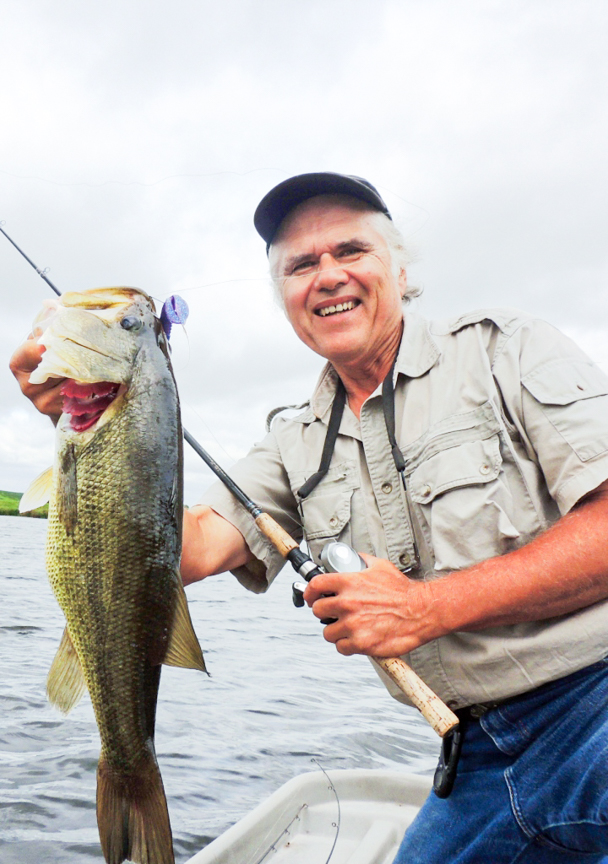
A hig head rigged with a soft plastic body is set a lot like a plastic worm if fished on the bottom; but there is a difference if it is being swum, pulled along or finger jigged. If being swum with a lift-and-fall, the strike often comes on the fall, especially with crappies. It will be felt as a “tic” with slack line, so set the hook. Retrieves being pulled along or finger jigged are about the same. With both, the strike can be a hard grab, at which time just set it; but if it is a “tic,” keep retrieving unless there is a sideways movement or weight feeling, at which time the fish has it in its mouth.
When faster lures like spinnerbaits and crankbaits are used with a straight, constant retrieve, the hit is normally a hard one. Immediately set the hook, but don’t give any slack.
With faster lures that are used with a stop-and-go retrieve, the strike and setting will be a bit different. Let’s break it down into a couple of lure types: diving/buoyant billed crankbaits, and blades and sinking crankbaits.
When paused during ripping or cranking retrieves, billed crankbaits slowly wobble upward on the pause. Strikes come as a slight “tic,” with line movement on the pause; or as a hard hit as soon as the lure is moved immediately after the pause. In both cases, set the hook.
When I’m using a sinking lure like Rat-L-Trap or Blitz Blade, the lure is often allowed to drop all the way to the bottom on the retrieve, and then ripped upward a few feet before dropping again; or doing it quicker by sweeping the rod sideways, then pausing. Most strikes come as a “tic” as the lure is falling, or immediately on the start of the rip upward or side sweep. With either of these, it is time to set the hook.
This has been a quick overall look at general indications of when to set the hook. No, it is not 100 percent certain for every person, but it is the way I do it, and how I teach others. The best way to learn is by using what we’ve mentioned and getting as much hands-on experience as possible.
MWO
SHARE THIS POST
Did you enjoy this post?
You can be among the first to get the latest info on where to go, what to use and how to use it!
Dan Galusha
Dan Galusha has fished all of his life, worked more than 45 years in the outdoor/media industry, and was inducted into the Fresh Water Fishing Hall of Fame as a Legendary Communicator. Direct questions through dansfishntales.com, facebook.com/dansfishntales and facebook.com/shootnplink.

